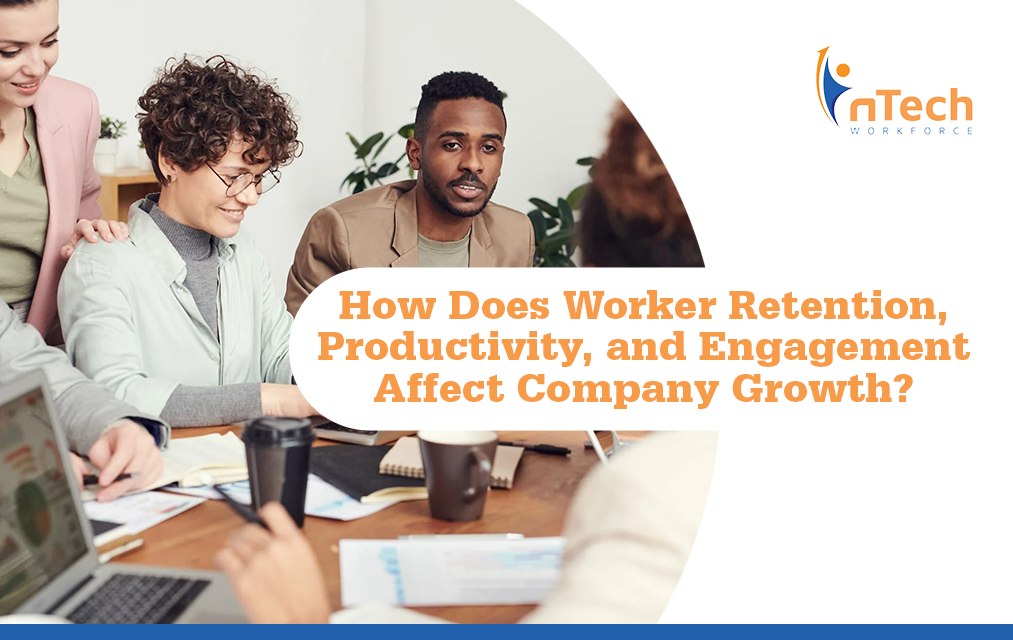How Can Business Leaders Foster Peer-To-Peer Recognition in the Workplace?
Creating a positive workplace culture is a key focus for managers and people leaders across industries. A significant element of this is peer-to-peer...
3 min read
![]() nTech Workforce
:
Nov 21, 2023 8:00:00 AM
nTech Workforce
:
Nov 21, 2023 8:00:00 AM

According to a Gallup study “Without employee engagement, there’s no team engagement, making it more difficult to improve business outcomes.”
Issues such as absenteeism, presenteeism, high turnover, and generally low productivity levels are currently widespread, making employee engagement a crucial area with significant potential for improvement.
In this edition of nSider, Andrea Briere and Elisa Burgos-Ojeda, nTech's People Operations Lead and Learning & Development Manager, share recommendations for leaders to improve workforce productivity and employee retention. These insights are about activating winning teams with tested tactics that will help foster a culture of engagement. Additionally, they provide an informative overview and resources to empower business leaders to make a meaningful impact on employee engagement.
Briere emphasizes that "while some may perceive it as happiness, it encompasses a broader scope." She defines employee engagement as “An employee's connection to the business and their work.”
Burgos-Ojeda also notes that employee satisfaction and engagement are “the engine that successful companies run on.”
Indeed, companies that have high employee engagement are 21% more profitable, have 41% lower absenteeism, and save themselves an average of $6000 to hire and train each new employee. It’s worth noting that these statistics contrast the fact that 85% of employees feel disengaged in their workplace.
Building trust and demonstrating equity in the workplace are important levers to pull for building company culture. Briere recommends starting by building “A workplace where employees feel motivated, valued, and genuinely impactful—where their contributions truly count and shape the company's trajectory."
From a recruitment perspective, Burgos-Ojeda also adds, “It’s wise to hire people who are inherently motivated, deeply invested in their careers, and committed to their professional development and growth. However, if the organizational culture fails to support these attributes, over time, it can become increasingly challenging to sustain this isolated island of motivation and engagement within a larger company that not only discourages it but also fails to nurture it over time.”
According to Briere, “Many companies overlook the crucial aspect of training their leaders to effectively communicate clear and concise expectations. Leaders who are very open in conversations and create a space where employees have opportunities for growth, learning, and feedback are exemplary in fostering and driving higher engagement within the workforce.”
Burgos-Ojeda raises other essential questions: “Are you engaged as a leader? Are you modeling engagement? Because it’s hard to fake that. If, as a leader, you are not presently engaged in the work, it becomes very challenging to imagine how you can effectively support the engagement of others.”
“When people feel undervalued and unsupported” is when employees have lower levels of engagement, according to Briere. Likewise, if “companies aren’t providing pathways for growth or new learning opportunities,” there is a similar lack of engagement.
If employee productivity is suffering as a result of low employee engagement, how can leaders right the ship? Briere says "Anxiety and various stressors can diminish engagement. When work starts to overwhelm your life, it's easy to feel disconnected from its purpose." Briere further emphasizes, "As a leader, setting the right example is crucial."
Leaders need to foster a culture that prioritizes employee well-being. This involves implementing policies that support work-life balance, such as flexible work schedules, remote work options, and initiatives that encourage a healthy integration of professional and personal life. Furthermore, leaders can actively seek feedback from employees to understand their unique needs and challenges, tailoring support initiatives accordingly.
By combining Briere's emphasis on addressing feelings of undervaluation, providing growth opportunities, and managing stress with proactive measures that promote work-life balance, leaders can create a more conducive environment for heightened engagement and sustained productivity.
When faced with a challenge and unsure of the way forward, seeking advice is crucial, especially from those directly impacted by the challenge.
Burgos-Ojeda recommends that leaders “Ask about the specific factors that motivate that particular employee, as motivation can vary from person to person," she suggests. "This discussion could be integrated into a structured review, where you ask about their motivators and provide some options. Alternatively, it can be seamlessly incorporated into ongoing one-on-one or group conversations."
Building trust can be a significant motivation, and achieving this can be facilitated through various straightforward methods. Burgos-Ojeda emphasizes, "ensuring clarity by engaging in regular conversations with one's manager and establishing a transparent growth trajectory within the organization." She adds, "Clearly outlining the specific criteria that pave the way for progression in one's career fosters trust. If an individual is willing to undertake those responsibilities to advance to the next career level, their manager should clarify that they are there to provide support. Alternatively, if they feel they're not prepared for that step at the moment, that's perfectly acceptable."
If you'd like to explore further insights on leadership and employee engagement, be sure to visit our resource hub. For personalized guidance or support in building winning teams through workforce supply and management, contact nTech today!

Creating a positive workplace culture is a key focus for managers and people leaders across industries. A significant element of this is peer-to-peer...

Professional development benefits both the employee and the employer. The worker can advance their skills and improve their knowledge, allowing them...

Employee engagement is the key to a successful business with positive company growth. Organizations with high levels of worker engagement are four...